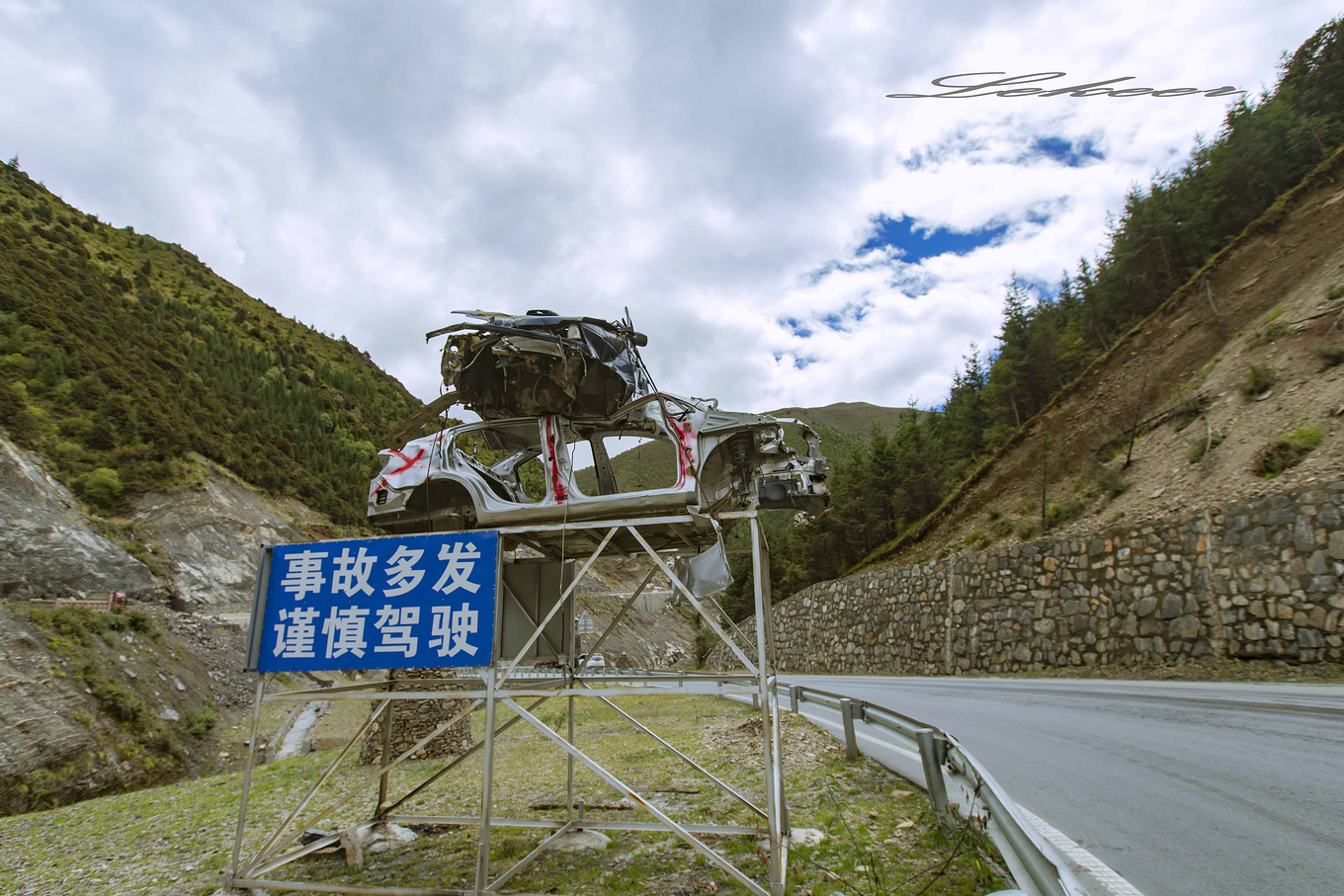

Rock slide on highway G318, July 15, 2018 in Tibet Autonomous Region, China. /Xinhua Photo
At one point I couldn't tell if my heart was racing so fast because of the debilitating high-altitude sickness, or because the roads we were traveling were so frightening to me.
We were only minutes into the 200-kilometer journey from Nimu County, part of Tibet's capital Lhasa, to the region's second-largest city Shigatse. It was a slow-ascending 3600 meters to 3800 meters above sea level, but the landscape was not at all relenting.
Looking to my right, giant boulders sat unsteadily on unending, treeless, rocky slopes across Yarlungzangbo River. "What stopped them from falling?" I thought.
There are roadside warnings every 50 meters or so, alerting "Danger! Watch out for falling rocks." "Focus! A blink could cost your life." "Remember your family is waiting for you at home." And statements of fact like, "This road has claimed the life of novice drivers, as well as champion racers."
My hands started sweating when I spotted cracks and gaping holes in the guardrails, which could only come from crashes. There were too many of them.

A wrecked car is placed aside of the road, serving as reminder for people to drive safely on highway G318 in Tibet Autonomous Region, China. /CGTN Photo
And then I saw an overturned truck lying on the roadside. Its face completely deformed.
For the 11th time, I looked to our driver, Tashi. And again said nothing, for fear of breaking his attention from the treacherous road.
Tashi was all calm and still humming to the high-pitched song on loop play, "Oh, what a beautiful landscape it is in our beloved Tibet."
He's used to all this.
Having covered much of the region known as "the roof of the world", drivers in our team are familiar with Tibet's difficult terrain.
Tibet's mountains are steep, many snow-capped even in summer. The ditches and valleys are deep, and the landscape here is complex.
Road building in the area often makes the news, because any progress here is hard-won; a breakthrough in technology, a badge to human will, – and always – a landmark.
Later, I was told the overturned truck was meant as another reminder of safety. And the dozen kilometers that had my heart in my throat were "really okay."
The drivers have driven in far worse conditions. For example, the only way to Biru County in Nagqu today allows only one-and-a-half wheels worth of a car, and they would really be driving "on edge."

A plane flies over the Shigatse Ariport Expressway, Tibet Autonomous Region, China, December 31, 2018. /VCG Photo
As we headed closer to Shigatse, the landscape changed. The river valleys and rickety slopes gave way to rocky roads. Here was better. Even though we had to keep a wider distance to the preceding car so the sand it kicked up would not blind us.
Road debris constantly hit at our doors and windows, accompanying the enthusiastic stereo-loop-play song, "Oh, Tibet. The mountains, the grassland. How beautiful you are."
There were no grasslands, we would see them later. There were mostly sandy rocks. But as we got closer to Shigatse, there were suddenly plots after plots of green, trees. What a pleasant surprise!
Tibet, with its punishing high altitude, dryness and coldness, is not a place for trees. That is, as I later learned, until an ecological campaign for better environment swept across the region in the past few years. Spruces, elms, willows, and poplars that are adjusted to fit the local Tibet environment have now taken root and been expanding coverage in the area.
And they made our last leg of the journey so much more enjoyable.
We were traveling on the region's first 'highway' – in the real sense. The Shigatse airport expressway was launched in late 2017, and it was the region's first highway to have a speed limit of 100 kilometers. Elsewhere in Tibet, including much of the way we meandered from Nimu to Shigatse, people could not legally travel faster than 30 km/h.
And there it was, the high point of our road trip – a smooth paved highway, saplings on the road side, Tashi and the stereo both singing heartily "Oh, what a beautiful landscape it is in our beloved Tibet."

Copyright © 2018 CGTN. Beijing ICP prepared NO.16065310-3
Copyright © 2018 CGTN. Beijing ICP prepared NO.16065310-3